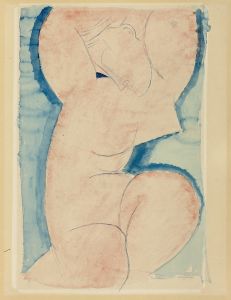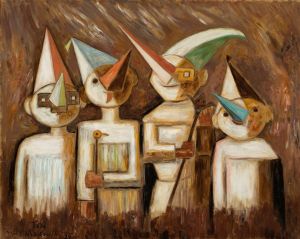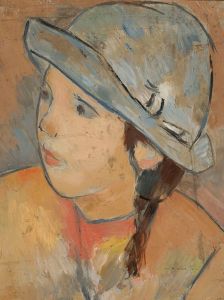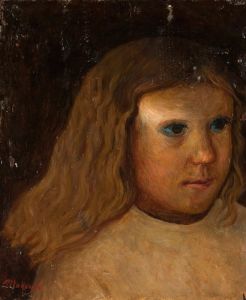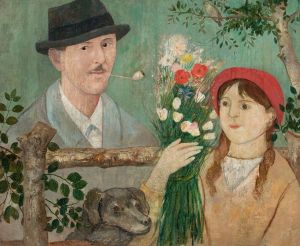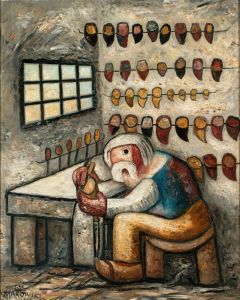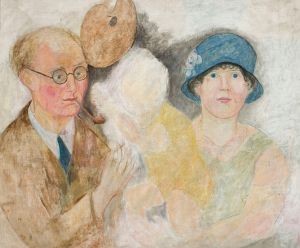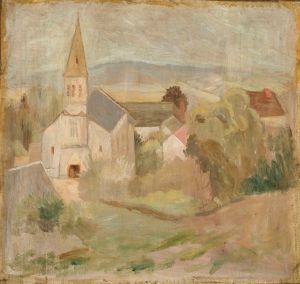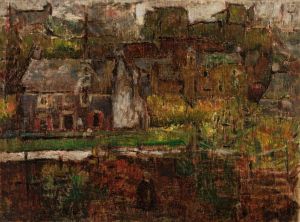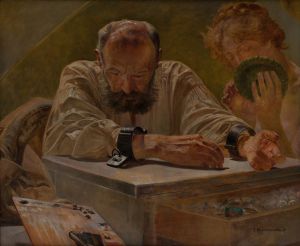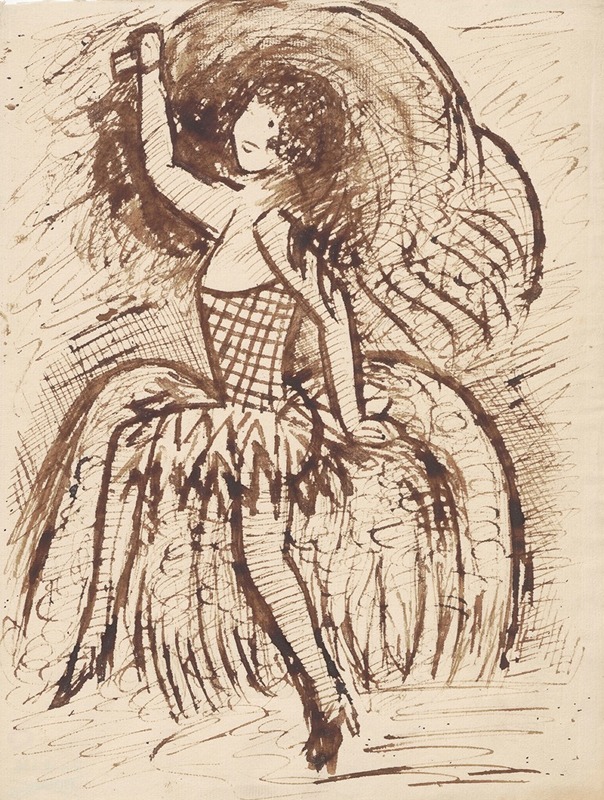
Dancer
A hand-painted replica of Tadeusz Makowski’s masterpiece Dancer, meticulously crafted by professional artists to capture the true essence of the original. Each piece is created with museum-quality canvas and rare mineral pigments, carefully painted by experienced artists with delicate brushstrokes and rich, layered colors to perfectly recreate the texture of the original artwork. Unlike machine-printed reproductions, this hand-painted version brings the painting to life, infused with the artist’s emotions and skill in every stroke. Whether for personal collection or home decoration, it instantly elevates the artistic atmosphere of any space.
Tadeusz Makowski was a Polish painter known for his unique style that combined elements of folk art, Cubism, and symbolism. Born in 1882 in Oświęcim, Poland, Makowski initially studied classical philology at the Jagiellonian University in Kraków before pursuing art at the Academy of Fine Arts in Kraków. He later moved to Paris in 1908, where he became part of the vibrant artistic community and was influenced by the avant-garde movements of the time.
"Dancer" is one of Makowski's notable works, reflecting his distinctive approach to painting. Although specific details about the painting "Dancer" are limited, Makowski's body of work often features themes of childhood, innocence, and the simplicity of rural life. His paintings frequently depict children, puppets, and scenes reminiscent of village life, rendered in a style that blends geometric forms with a soft, almost dreamlike quality.
Makowski's style evolved over the years, initially influenced by the Impressionists and Post-Impressionists he encountered in Paris. However, he soon developed a more personal style, incorporating elements of Cubism, which was gaining prominence in the early 20th century. This influence is evident in his use of geometric shapes and a flattened perspective, which can be seen in many of his works, including "Dancer."
The painting "Dancer" likely reflects Makowski's interest in capturing the essence of movement and the joy of dance, themes that align with his broader artistic focus on the innocence and playfulness of childhood. His use of color and form in this painting would be consistent with his other works, where he often employed a muted palette and simplified shapes to convey emotion and narrative.
Makowski's work is characterized by its emotional depth and a sense of nostalgia, often evoking a world untouched by the complexities of modern life. His paintings, including "Dancer," are celebrated for their ability to convey a sense of wonder and simplicity, drawing viewers into a world that is both familiar and enchanting.
Throughout his career, Makowski exhibited his work in various galleries and exhibitions, gaining recognition for his unique artistic vision. Despite the challenges of his time, including the disruptions of World War I and the interwar period, he continued to produce art that resonated with audiences both in Poland and abroad.
Makowski passed away in 1932 in Paris, leaving behind a legacy of work that continues to be appreciated for its charm and originality. His paintings, including "Dancer," remain an important part of Polish art history, reflecting the cultural and artistic currents of the early 20th century while also offering a timeless exploration of human emotion and experience.






